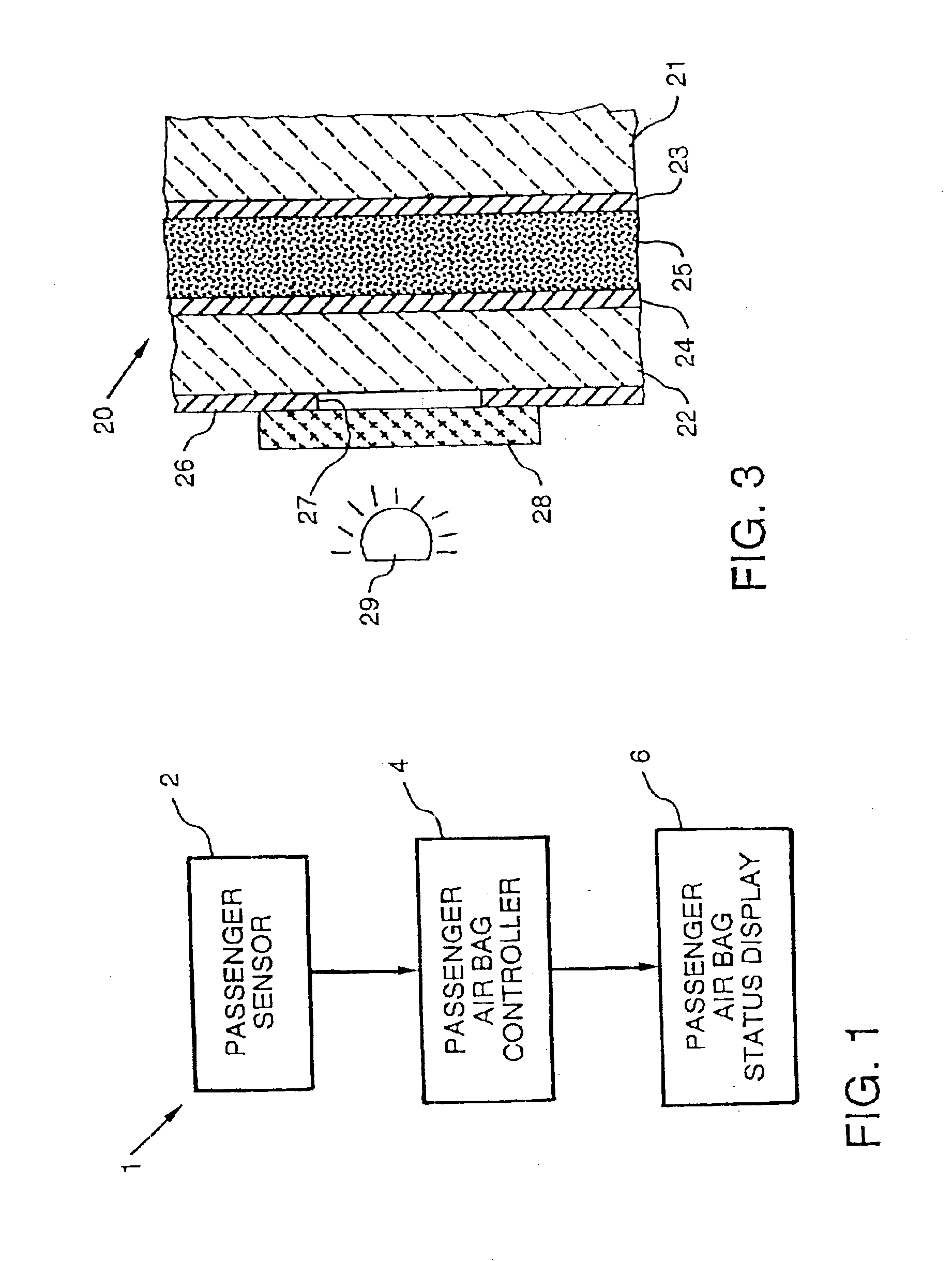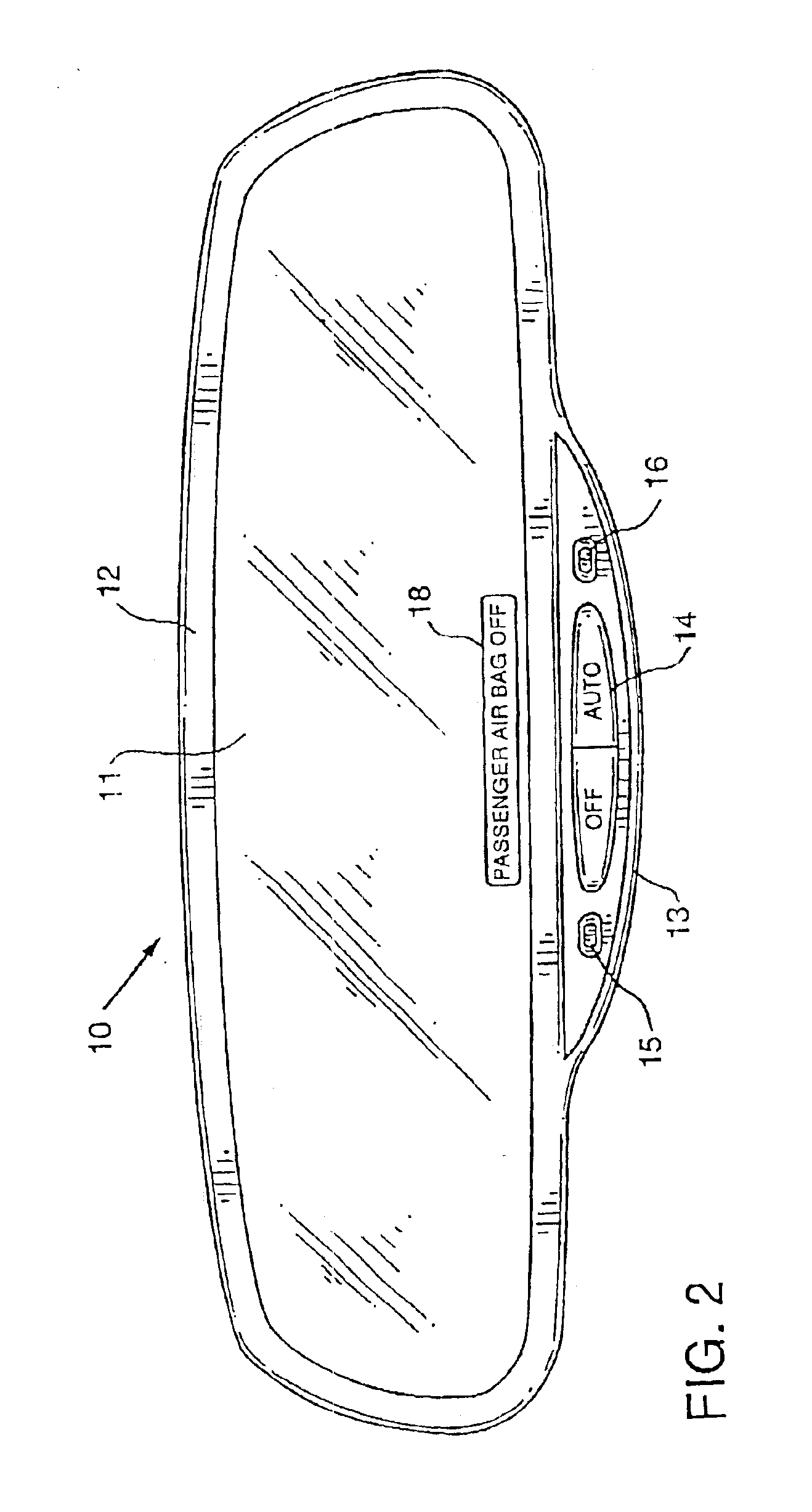Rearview mirror with display
a rearview mirror and display technology, applied in the field of rearview mirrors, can solve the problems of obstructing the front seat passenger's ability to see the display, difficult or impossible to read display, and difficult to read conventional display by some occupants of the vehicl
- Summary
- Abstract
- Description
- Claims
- Application Information
AI Technical Summary
Problems solved by technology
Method used
Image
Examples
Embodiment Construction
FIG. 1 is a schematic diagram illustrating a vehicle sensor and display system 1 in accordance with an embodiment of the present invention. The system 1 includes a passenger sensor 2, a passenger air bag controller 4, and a passenger air bag status display 6. Alternatively, the display system could include a manual air bag shutoff switch in place of, or in addition to, the passenger sensor 2 and the air bag controller 4.
The passenger sensor 2 is used to determine whether a passenger is located at a particular position in a vehicle. For example, the passenger sensor 2 may be used to determine whether a passenger is seated in the right front passenger seat of a car or the like. The passenger sensor 2 may be used to determine the approximate size of a passenger in order to allow deactivation of the passenger's air bag if the passenger is less than a particular size. The sensor 2 may also be used to determine whether an infant or child seat is present and to deactivate the air bag if su...
PUM
 Login to View More
Login to View More Abstract
Description
Claims
Application Information
 Login to View More
Login to View More - R&D
- Intellectual Property
- Life Sciences
- Materials
- Tech Scout
- Unparalleled Data Quality
- Higher Quality Content
- 60% Fewer Hallucinations
Browse by: Latest US Patents, China's latest patents, Technical Efficacy Thesaurus, Application Domain, Technology Topic, Popular Technical Reports.
© 2025 PatSnap. All rights reserved.Legal|Privacy policy|Modern Slavery Act Transparency Statement|Sitemap|About US| Contact US: help@patsnap.com



